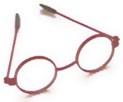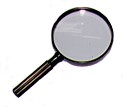Visual Disabilities
Introduction
Something to Think About...
 Assistive technology empowers people with disabilities to perform tasks that would otherwise be difficult or impossible. Few people who wear glasses consider themselves disabled, yet many would have difficulty using the web without them. Imagine the uproar if nine out of ten websites (somehow) became incompatible with eyeglasses. Site usage would plummet, users would clamor to blame site owners for creating barriers, and fixes would be made. As remote as that possibility may seem, people who rely on assistive technologies live this frustration daily, across the web. The key to web accessibility is ensuring that content is perceivable, operable, understandable, and robust for people using various assistive technologies.
Assistive technology empowers people with disabilities to perform tasks that would otherwise be difficult or impossible. Few people who wear glasses consider themselves disabled, yet many would have difficulty using the web without them. Imagine the uproar if nine out of ten websites (somehow) became incompatible with eyeglasses. Site usage would plummet, users would clamor to blame site owners for creating barriers, and fixes would be made. As remote as that possibility may seem, people who rely on assistive technologies live this frustration daily, across the web. The key to web accessibility is ensuring that content is perceivable, operable, understandable, and robust for people using various assistive technologies.
Some people have visual disabilities that are not easily corrected, and some have no vision at all. "Legal blindness" is when the best corrected visual acuity is 20/200, or less, or the person's visual field is 20 degrees or less. Visual acuity of 20/200 means the person must stand 20 feet away to see something that can be seen from 200 feet away by someone with 20/20 vision. People who are blind have an array of assistive technologies available to support common tasks, such as using the web. 
"Low vision" is that which cannot be corrected to near 20/20. It can arise due to aging, but younger individuals may also experience it because of genetics, traumatic injuries, or illnesses.
A third category of visual disability is color deficiency (often called color blindness), although it typically does not pose significant impacts to daily living. Still, it is helpful to anticipate color-blind users when designing web content.
